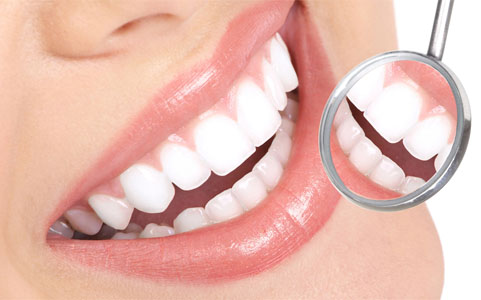 Over time, your teeth can go from white to not-so-bright for a number of reasons:
Over time, your teeth can go from white to not-so-bright for a number of reasons:
Food and Drink: Coffee, tea and red wine are some major staining culprits. What do they have in common? Intense color pigments called chromogens that attach to the white, outer part of your tooth (enamel).
- Tobacco Use: Two chemicals found in tobacco create stubborn stains: Tar and nicotine. Tar is naturally dark. Nicotine is colorless until it’s mixed with oxygen. Then, it turns into a yellowish, surface-staining substance.
- Age: Below the hard, white outer shell of your teeth (enamel) is a softer area called dentin. Over time, the outer enamel layer gets thinner with brushing and more of the yellowish dentin shows through.
- Trauma: If you’ve been hit in the mouth, your tooth may change color.
- Medications: Young children who are exposed to antibiotics like tetracycline and doxycycline when their teeth are forming (either in the womb or as a baby) may have discoloration of their adult teeth later in life.
Tooth bleaching is a simple process. Bleaching products contain either hydrogen peroxide or carbamide peroxide that break stains into smaller pieces, thus making tooth color less concentrated and your teeth brighter. Bleaching may not correct all types of discoloration. Moreover, bleaching will not work on veneers, crowns or fillings. There are mainly two methods for teeth whitening.
In-Office Bleaching
This procedure is called chairside bleaching and usually requires only one office visit. The dentist will apply either a protective gel to your gums or a rubber shield to protect your gums. Bleaching product is then applied to the teeth. A special light might be used to enhance the action of the whitening agent.
Home Bleaching
Peroxide-containing whiteners that come in a gel are placed in a tray that is custom-made for your own teeth. This is applied for some hours daily and for a period that is decided in collaboration with your dentist. The concentration of the bleaching agent may vary but is lower than the one used in the office.
Are There Any Side Effects from Teeth Whitening?
Some people who use teeth whiteners may experience tooth sensitivity. That happens when the peroxide in the whitener gets through the enamel to the soft layer of dentin and irritates the nerve of your tooth. In most cases the sensitivity is temporary and can be effectively treated by your dentist.
Overuse of over-the-counter bleaching products can also damage the tooth enamel or gums, so be sure to follow directions and talk to your dentist.
